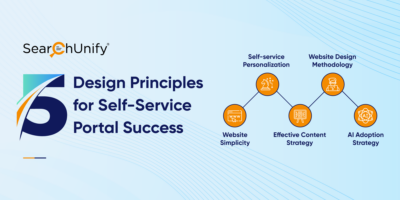
Contact centers have always played a vital role in strengthening customer relations and rendering stellar CX at scale. This was further amplified during the pandemic. According to a study of contact centers, 92% of respondents experienced an uptick in the volume of interactions across channels. This placed contact centers and agents right at the heart of customer relationship management.
Customer expectations, too, have hit an all-time high. 37% of customers now expect a response to their email within an hour. As a result, customer service standards are changing. In fact, 62% of customers opine their experiences with one industry influences their expectations of others.
So, how can you achieve support success when pitted against all industries? This is where contact center benchmarking comes into the picture. A critical evaluation of your current processes stacked up against other companies will reveal what needs to be changed to help you gain dominion.
What is Contact Center Benchmarking?
Contact center benchmarking is a systematic and analytical process of identifying, examining, implementing, and leveraging contact center best practices to gain and maintain a competitive edge. It helps you evaluate performance and implement necessary changes to improve operational efficiency.
Within the scope of performance analysis, benchmarking allows you to identify inefficiencies and highlight areas of improvement. Additionally, it tracks down cost reduction areas to ensure the optimal utilization of resources, tests the effectiveness of your new initiatives, and consequently accelerates improvement.
This blog post assists in catapulting your benchmarking process into action with 8 simple steps.
Steps to Implement a Benchmark Plan
When implemented meticulously, contact center benchmarking enables a business to measure performance and amplify it consistently. Here’s an 8-step plan that will help you with the same:
1. Identify the Process or Service to Benchmark
For starters, you must identify the services or processes you wish to benchmark. Not only will the analysis save you money but also help better ascertain the root cause of what is working and what isn’t. For instance, how is the AHT impacting CSAT score and perceived customer service quality? How much time does it take to solve a customer query?
After you select the metrics to benchmark, ensure that they align with your business goals and are verifiable through analytics. That’s why embedding a unified cognitive platform has become crucial among contact centers for a comprehensive picture of performance data and react to changing trends in real-time
2. Select Companies to Benchmark Against
Next up, you need to determine whether you want to benchmark against a direct competitor or a company outside your domain or industry. If your goal is to determine where you stand when stacked up against direct competitors, then you should benchmark against the companies within your industry. Contrarily, if you wish to assess innovative and emerging different business processes, then comparison outside the industry is advisable.
3. Research & Collect Data
Create a lucid outline that lists the variables to be measured and assessed, data points to be included, formulas to be used, etc. Doing so will enable your team to collect more accurate data across all areas.
4. Analyze & Interpret Data
After collecting the data, you need to analyze and interpret it for any inefficiencies, irregularities, or deviations. Take note of influencing factors like the company size, resources at hand, and geography while analyzing the data. Doing so will take you a step closer to revealing anomalies between your company and the industry best.
5. Measure Your Performance Against Selected Data Set
Compare your collected data against the metrics of your preference (same industry or global). Thereafter, brainstorm ideas that can efficiently and effectively bridge the gaps. While you’re at it, ensure that you focus on the bigger picture and not just present-day issues so that the pitched ideas don’t become obsolete too quickly. Once the results are out, communicate the outliers to appropriate teams while also looping in the key stakeholders.
6. Establish New Goals & Develop an Action Plan
It’s now time to use your learnings to establish new goals that are attainable and align with the overall objectives of your brand. Clearly linking the goals with the company’s objectives will help negate employee pushback, if any. Once the goals and objectives have been set, create a plan to implement the changes and close the performance gaps. This action plan must clearly define the tasks in detail along with a timeline.
7. Monitor the Results
Ensure that the action plan is properly implemented and keep tabs on employee performance. Employees must have access to the required information for each process so that they’re on the same page while working on the collective goal. Subsequently, measure the actual performance against predetermined standards and focus on areas that need improvement.
8. Recalibrate Benchmarks & Repeat the Process
Set a schedule for regular appraisals of your benchmark process to ensure it remains effective and up-to-date. Consider the following questions: Are the metrics being tracked still valuable? How are they being measured? Then, compile the feedback received from employees & stakeholders regarding the appraisal process. Finally, evaluate the need for improvement or additional training to warrant that your efforts achieve desired results.
Looking for Ways to Improve Your Contact Center Quality? We’re Here to Help
Contact centers play a crucial role in amplifying retention and augmenting CSAT by delivering stellar CX time and again. But, to get it right organizations need to upgrade their contact centers and keep them in pristine condition. Wondering how? Fret not! Watch this webinar and gain valuable insights on how you can reimagine your contact center experiences, quality, and productivity.


















